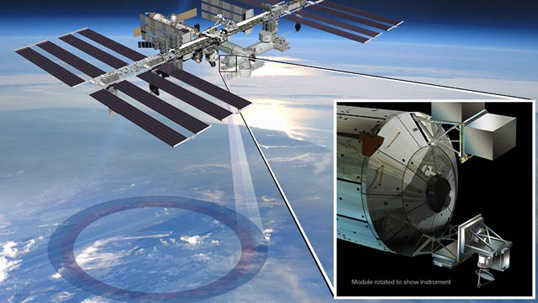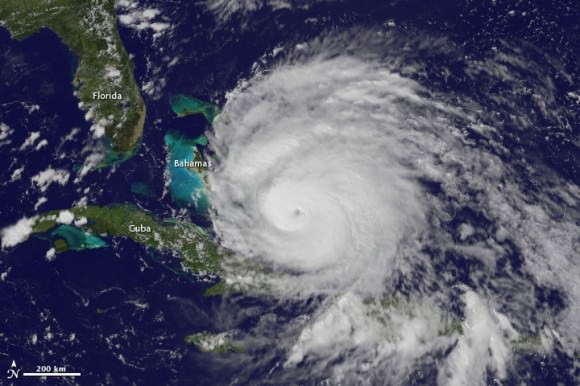Here’s a cool example of a satellite recycling project. NASA used to have a probe called QuikSCAT that took a look at ocean wind speeds — including hurricanes, storms and typhoons. After 10 years of loyal service, the satellite failed in 2009 and a full replacement looked expensive. Now, however, spare parts for QuikSCAT are going to be used on the International Space Station for a low-budget fix (which the agency says will work just fine).
The parts are old — they are from the 1990s — but incredibly, they are functional. NASA also added some newer, commercially available hardware to make ISS-RapidScat fit in the space station as well as the SpaceX Dragon spacecraft that will bring it to orbit in early 2014.
Because this is very much a low-cost project, certain design compromises were made — like not using radiation-hardened computer chips, which is normal in scatterometers of this sort. (This type of device harmlessly sends low-energy microwaves off the Earth’s service to get the information it needs.)

“If there’s an error or something because of radiation, all we have to do is reset the computer. It’s what we call a managed risk,” stated Howard Eisen, the ISS-RapidScat project manager at NASA’s Jet Propulsion Laboratory.
There’s another big difference with this scatterometer mission: it’s flying in a different orbit that most. A typical mission will do a sun-synchronous orbit, making it cross the Earth’s equator at the same local time every time it orbits the planet (say, 12 p.m. local.) The ISS, however, passes over different parts of Earth at different times.
“This means the instrument will see different parts of the planet at different times of day, making measurements in the same spot within less than an hour before or after another instrument makes its own observations,” NASA stated.

“These all-hour measurements will allow ISS-RapidScat to pick up the effects of the sun on ocean winds as the day progresses. In addition, the space station’s coverage over the tropics means that ISS-RapidScat will offer extra tracking of storms that may develop into hurricanes or other tropical cyclones.”
NASA plans to share information with the European MetOp ASCAT scatterometer. Between the two missions, NASA expects that about 90% of Earth’s surface will be examined at least once a day,with some parts visible several times a day.
All in all, NASA is presenting the recycling project as a boon at a time when the agency is grappling with its 2014 budget request. Instead of an estimated cost of $400 million to launch a replacement QuikSCAT, the cost of ISS-Rapidscat is expected to reach $26 million.
Source: NASA


Great thinking from NASA. The ISS is a great platform for dangling all these instruments.
On topic, here’s a cool *animated* site showing the current wind conditions in the USA:
http://hint.fm/wind/
I’m sure it will be even more interesting with an approaching hurricane, or the Spring tornado season…
This is great… more BANG for your buck! As mentioned in previous posts, I’m all over recycling and retasking useful used assets…